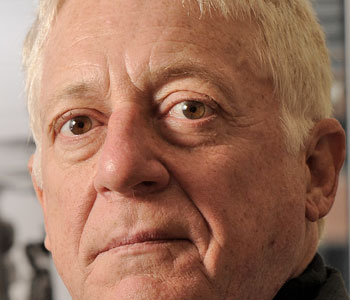Lynne A. Weikart
Follow the Money: Who Controls New York City Mayors?
SUNY Press
194 pages, 9 x 6 inches
ISBN 978 1438425320
America has had three revolutions: 1776, 1929 and Ronald Reagan’s New Federalism. The signs of the coming third American revolution were evident in 1975 when New York City experienced its worst fiscal crisis since the Great Depression. New York City presaged other municipal crises in the decade that followed.
New York had been a city of progressive thought and a provider of generous social services for its citizens beginning with the Great Depression of 1929 when Mayor Fiorello La Guardia, with the help of President Franklin Roosevelt, established extensive governmental services for city residents – public housing, new public schools, rent control, expansion of public health services, and an extensive park system. But in the 1975 fiscal crisis, the financial elites in Wall Street sought to unravel the safety net of that earlier period. And, in large part, they have succeeded.
In many ways, municipal decision-making has been hidden; most New Yorkers did not know that the decisions made on Wall Street would affect their future. The curtain of privacy of hidden deal-making between politicians and financial elites raises only in times of fiscal crises when ordinary citizens begin to question the private deal making of Wall Street because those deals negatively affect the “real world,” the world of Main Street. During fiscal crises, we turn to government for help and leadership, leadership on every level - national, state and local.
This book explores the leadership of government on the local level. What goes on between the financial elites who control the nation’s purse strings and the political leaders elected by us, the citizens of New York City? What deals are made that affect the lives of ordinary New Yorkers? What compromises do New York City politicians make when dealing with the most powerful people in the financial world?

What goes on between the financial elites who control the nation’s purse strings and the political leaders elected by us, the citizens of New York City?
I first became interested in how money affected political decision making when my son was in the first grade at PS 75 on the West side of Manhattan. It was 1976 and New York City was in the second year of a fiscal crisis that had decimated city services. The schools were in chaos; teachers, aides and assistant principals were laid off, supplies were nonexistent and the parents were furious. Our response was to organize – we raised funds to buy supplies and pay for the art and music teacher; we signed and delivered petitions by the thousands to the Board of Education.
It was a busy year. Yet none of us knew how our schools had gotten in such terrible shape in so short a time. So I began a search. How were New York City education funds raised and allocated? Just as importantly, who was responsible for those decisions? I became a fiscal analyst and eventually put those tools to work in government and then in academia. My interests broadened to fiscal decisions in other areas of government, and finally led me to this book.
In political science, those of us interested in decision making usually talk about the pluralists, who emphasize bargaining among a multiplicity of interests that define the urban power structure and de-emphasize economic power, and the structuralists, who emphasize the relationship between the state and the underlying socioeconomic system that shapes the political agenda. The structuralists are divided among various camps: regime theorists, public choice theorists, and neo Marxist critiques.
Yet somehow these theories seemed inadequate when I examined mayoral decision making in New York City. In spite of differences, they were both right – interest groups do make enormous differences particularly the rich ones. And the very structure of the state and the socioeconomic system makes all the difference – the Governor of New York State has extraordinary power over public policy issues facing the city and many New York governors have exercised that power again and again. So in Follow the Money I examine each New York City mayor since the Great Depression who faced fiscal difficulties. And I explore the principal people behind a mayor’s fiscal decisions.
When we start with Mayor Fiorello La Guardia, we discover that the New York State Governor Herbert Lehman made a deal with the banks when the city was broke – the banks would finance the city’s debt and the city in return would give the banks what they wanted – lower taxes and service reductions. That same deal was made after the 1975 fiscal crisis between Governor Hugh Carey and the banks. History does indeed repeat itself. But the responses of the two mayors were quite different. Mayor La Guardia called the banks thieves and the Governor irresponsible. He was so determined and persistent in his name calling that Governor Lehman finally gave in and agreed to raise taxes to improve the city’s revenue position. In 1975, Mayor Abe Beame had no success fighting Governor Carey’s agreement with the bankers. He caved, as did the unions, and watched his city being cut to ribbons.
Follow the Money explores the choices facing mayors La Guardia, Beame, Koch, Dinkins, Giuliani, and Bloomberg, the current mayor. Each of them faced fiscal difficulty, and all were pressured by financial elites to give up their own priorities and agree to the priorities of the financial elites.
Some people have told me that the most interesting part of the book was the chapter on Rudy Giuliani and his decision making. I don’t agree. I think the chapter on Mayor David Dinkins is the most interesting and the most challenging to write because Mayor Dinkins faced a fiscal crisis that was as severe and difficult as the 1975 fiscal crisis. And, in my judgment, the fiscal policies of Mayor Dinkins were outstanding. Time and again Mayor Dinkins placated the bankers while keeping his public policy goals in the forefront - the “safety net” of social services to the city’s poorest citizens. However, he failed to convince the city’s citizens that he was a capable leader, and thus only served one term.
Another example of the extraordinary power of the state government over the city was the struggle between Governor Nelson Rockefeller and Mayor John Lindsay. Time after time the Governor blocked attempts by the Mayor to increase taxes to deal with the city’s growing deficit. Both the Governor and State Legislature were quick to add to the city’s spending through giveaways to the unions but at the same time the state government refused to agree to increases in city taxes. Eventually, the debts became too enormous and the city came close to bankruptcy.

Follow the Money explores the choices facing mayors La Guardia, Beame, Koch, Dinkins, Giuliani, and Bloomberg, the current mayor. Each of them faced fiscal difficulty, and all were pressured by financial elites to give up their own priorities and agree to the priorities of the financial elites.
Follow the Money is significant because so little is written about banking and its influence on the rest of society. With the latest fiscal crises facing the country, it could be that the pattern will change and the banking influence on the rest of us will be more closely examined.
The book shows that, by and large, the financial elites won on most occasions, whenever times were hard. Yet, even in fiscally hard times, mayors clearly had some discretion and achieved some of their goals – whether it was Koch demanding and finally winning the right to control the MAC surpluses, or Dinkins who insisted on money for “cops and kids” not just “cops,” or Giuliani who was determined to spend dollars on public safety and education regardless of what the financial elites said, or Bloomberg who claimed that an increase in property taxes was the only sound choice. Although private power usually dominated public policy during hard times, New York City mayors did have some wins.




We don't put paywalls. We don't distract you with ads. We don't sell your data.
Please help to keep this running!